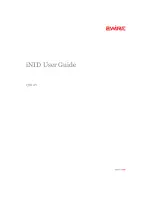
358
Step Command
Remarks
1.
Enter system view.
system-view
N/A
2.
Enter RIPng view.
ripng
[
process-id
] [
vpn-instance
vpn-instance-name
]
N/A
3.
Enable the zero field check on
incoming RIPng packets.
checkzero
By default, this feature is enabled.
Configuring the maximum number of ECMP routes
Step Command
Remarks
1.
Enter system view.
system-view
N/A
2.
Enter RIPng view.
ripng
[
process-id
] [
vpn-instance
vpn-instance-name
]
N/A
3.
Configure the maximum
number of ECMP routes.
maximum load-balancing
number
By default, the maximum number of
ECMP routes is 8.
Applying an IPsec profile
To protect routing information and prevent attacks, RIPng supports using an IPsec profile to authenticate
protocol packets. For more information about IPsec profiles, see
Security Configuration Guide
.
Outbound RIPng packets carry the Security Parameter Index (SPI) defined in the relevant IPsec profile. A
device uses the SPI carried in a received packet to match against the configured IPsec profile. If they
match, the device accepts the packet. If they do not match, the device discards the packet and does not
establish a neighbor relationship with the sending device.
You can configure an IPsec profile for a RIPng process or interface. The IPsec profile configured for a
process applies to all packets in the process. The IPsec profile configured for an interface applies to
packets on the interface. If an interface and its process each have an IPsec profile configured, the
interface uses its own IPsec profile.
To apply an IPsec profile to a process:
Step Command
Remarks
1.
Enter system view.
system-view
N/A
2.
Enter RIPng view.
ripng
[
process-id
] [
vpn-instance
vpn-instance-name
]
N/A
3.
Apply an IPsec profile to the
process.
enable ipsec-profile
profile-name
By default, no IPsec profile is
applied.
To apply an IPsec profile to an interface:
Step Command
Remarks
1.
Enter system view.
system-view
N/A
















































